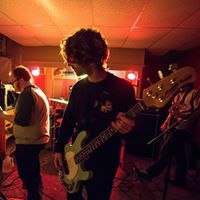Christian J Rasmussen
age ~56
from Acton, MA
Christian Rasmussen Phones & Addresses
- 14 Mallard Rd, Acton, MA 01720
- Nashua, NH
- Shrewsbury, MA
- Dracut, MA
- Lowell, MA
Work
-
Company:Mintera corporation
-
Address:35 Nagog Park, Acton, MA 01720
-
Phones:978 635-1380
-
Position:Principal optical engineer
-
Industries:Communications Services
Isbn (Books And Publications)
-
Ressourcebesparende Byudvikling: Belyst Ved En Ideskitse For En Sydlig Vkstretning Fra Arhus Afgangsopgave
view source -
Author:Christian Rasmussen
-
ISBN #:8787582546
-
Udviklingsprocessen I Latinamerika
view source -
Author:Christian Heilskov Rasmussen
-
ISBN #:8770281912
-
Hipolito, En Dreng I Mexico
view source -
Author:Christian Heilskov Rasmussen
-
ISBN #:8770282455
-
Mexicansk Hverdag
view source -
Author:Christian Heilskov Rasmussen
-
ISBN #:8770282536
Name / Title
Company / Classification
Phones & Addresses
Principal Optical Engineer
Mintera Corporation
Communications Services
Communications Services
35 Nagog Park, Acton, MA 01720
Treasurer, President
Acacia Communications Inc.
Telecommunications · Services-Misc
Telecommunications · Services-Misc
3 Clock Tower Pl, Maynard, MA 01754
3 Clk Twr Pl, Maynard, MA 01754
978 938-4896, 978 938-4899
3 Clk Twr Pl, Maynard, MA 01754
978 938-4896, 978 938-4899
Principal Optical Engineer
Mintera Corporation
Communication Services
Communication Services
35 Nagog Park, Acton, MA 01720
978 635-1380, 978 635-1383
978 635-1380, 978 635-1383
Resumes

Cofounder, Director Of Dsp And Optics
view sourceLocation:
Acton, MA
Industry:
Telecommunications
Work:
Mintera 2001 - 2008
Principal Optical Engineer
Acacia Communications 2001 - 2008
Cofounder, Director of Dsp and Optics
Principal Optical Engineer
Acacia Communications 2001 - 2008
Cofounder, Director of Dsp and Optics
Education:
Technical University of Denmark

Christian Rasmussen
view source
Christian Rasmussen
view sourceIndustry:
Banking

Christian Rasmussen
view source
Christian Rasmussen
view source
Christian Rasmussen
view sourceLocation:
United States

Christian Rasmussen
view sourceLocation:
United States
Us Patents
-
Partial Dpsk (Pdpsk) Transmission Systems
view source -
US Patent:7949261, May 24, 2011
-
Filed:Apr 25, 2007
-
Appl. No.:11/740212
-
Inventors:Benny Mikkelsen - Newton MA, US
Pavel Mamyshev - Morganville NJ, US
Christian Rasmussen - Shrewsbury MA, US
Fenghai Liu - Nashua NH, US -
Assignee:Mintera Corporation - Acton MA
-
International Classification:H04B 10/06
-
US Classification:398208, 398202, 398209, 398212, 398213, 398140, 398141, 398158
-
Abstract:An optical receiver includes a demodulator having a delay interferometer comprising an optical input that receives a phase modulated optical signal from a bandwidth limited transmission system. The delay interferometer has a free spectral range that is larger than a symbol rate of the phase modulated optical signal by an amount that improves receiver performance. The receiver also includes a differential detector having a first and a second photodetector. The first photodetector is optically coupled to the constructive optical output of the delay interferometer. The second photodetector is optically coupled to the destructive optical output of the delay interferometer. The differential detector combines a first electrical detection signal generated by the first photodetector and a second electrical detection signal generated by the second photodetector to generate an electrical reception signal.
-
Methods And Apparatus For Spectrally Efficient Optical Modulation
view source -
US Patent:7366425, Apr 29, 2008
-
Filed:Mar 11, 2003
-
Appl. No.:10/386359
-
Inventors:Pavel V. Mamyshev - Morganville NJ, US
Christian J. Rasmussen - Nashua NH, US
Benny P. Mikkelsen - Boston MA, US
Fenghai Liu - Nashua NH, US -
Assignee:Mintera Corporation - Lowell MA
-
International Classification:H04B 10/04
-
US Classification:398188
-
Abstract:Different techniques for generating spectrally efficient carrier-suppressed modulated optical signals, also known as “phase-shaped binary transmission” (PSBT) signals, employ electrical components that generate only 2-level or binary signals, in contrast to techniques that require 3-level electrical drivers. The PSBT modulators can be used with return-to-zero (RZ) modulators for generating RZ-PSBT signals, which have the characteristic of even greater spectral efficiency than NRZ PSBT signals. The technique is generalized to RZ signals with an arbitrary phase difference between pulses. These signals can be generated by shifting the central (carrier) frequency of an RZ modulated optical signal, which can be done using a certain phase modulation or using spectral filtering with a passband offset from the center (carrier) frequency of the modulated optical signal, and the signals can also be generated by phase modulation at a frequency lower than the signaling rate of the modulated signal.
-
Chirp Control In A High Speed Optical Transmission System
view source -
US Patent:20030218790, Nov 27, 2003
-
Filed:Mar 17, 2003
-
Appl. No.:10/391534
-
Inventors:Benny Mikkelsen - Boston MA, US
Christian Rasmussen - Nashua NH, US
Tina Fjelde - Boston MA, US
Fenghai Liu - Nashua NH, US
Pavel Mamyshev - Morganville NJ, US
David Wolfson - Boston MA, US
John Kaufmann - Maynard MA, US -
Assignee:MINTERA CORPORATION
-
International Classification:G02F001/01
G02B026/00 -
US Classification:359/238000
-
Abstract:A high speed digital optical transmission system that improves data transmission performance in both linear and nonlinear system environments. The high speed optical transmission system includes a laser for generating a CW light beam, and a data modulator for modulating the CW light beam in response to an electrical NRZ data signal to generate a modulated NRZ optical signal with positive chirp. The bias point of the data modulator is obtained by increasing the bias offset relative to quadrature while maintaining the voltage corresponding to a 0 bit at a predetermined level. The bias point allows the data modulator to be operated so that the chirp of the modulated NRZ optical signal is positive for most of each bit time slot.
-
Partial Dpsk (Pdpsk) Transmission Systems
view source -
US Patent:20110280588, Nov 17, 2011
-
Filed:Apr 14, 2011
-
Appl. No.:13/086804
-
Inventors:Benny MIKKELSEN - Newton MA, US
Pavel MAMYSHEV - Morganville NJ, US
Christian RASMUSSEN - Shrewsbury MA, US
Fenghai LIU - Nashua NH, US -
International Classification:H04B 10/06
-
US Classification:398202
-
Abstract:An optical receiver includes a demodulator having a delay interferometer comprising an optical input that receives a phase modulated optical signal from a bandwidth limited transmission system. The delay interferometer has a free spectral range that is larger than a symbol rate of the phase modulated optical signal by an amount that improves receiver performance. The receiver also includes a differential detector having a first and a second photodetector. The first photodetector is optically coupled to the constructive optical output of the delay interferometer. The second photodetector is optically coupled to the destructive optical output of the delay interferometer. The differential detector combines a first electrical detection signal generated by the first photodetector and a second electrical detection signal generated by the second photodetector to generate an electrical reception signal.
-
Multi-Range Frequency-Domain Compensation Of Chromatic Dispersion
view source -
US Patent:20140105617, Apr 17, 2014
-
Filed:Oct 17, 2013
-
Appl. No.:14/056520
-
Inventors:- Maynard MA, US
Christian RASMUSSEN - MAYNARD MA, US -
International Classification:H04B 10/61
-
US Classification:398208
-
Abstract:Disclosed herein are methods, structures, and devices that provide multi-range frequency domain compensation of chromatic dispersion within optical transmission systems that offer significant operational power savings. More specifically, a method of operating frequency domain filtering structures and circuits including FFT, frequency-domain filter multiplication and iFFT functions at a lower duty cycle for shorter overlap such that significant power savings is realized.

Christian Rasmussen
view source
Ant Christian Rasmussen
view source
Christian Rasmussen
view source
Christian Rasmussen
view source
Christian M Rasmussen
view source
Hans Christian Rasmussen ...
view source
Christian Rasmussen
view source
Christian R. Rasmussen
view sourceMyspace

Christian Rasmussen (Chri...
view sourceChristian Rasmussen (Christian Rasmussen)'s profile on Myspace, the leading social entertainment destination powered by the passion of our fans.
Flickr
Plaxo

Christian Rasmussen
view sourceHolteCEO at Pensio

Christian Rasmussen
view sourceShrewsbury, MAPast: Principal Optical Engineer at Mintera, Assistant Research Professor at Technical...

Christian Rasmussen
view sourceMeteorolog at DMI

Christian Rasmussen
view sourceCR Consulting

Christian Rasmussen
view sourceCopenhagen
Classmates

Christian Rasmussen
view sourceSchools:
Nicholson Catholic College Belleville Morocco 1984-1988
Community:
Gloria Gagnon, Burnell Bartlett, Geoff Ridder

Christian Christian (Rasm...
view sourceSchools:
Centreville High School Centreville NB 1969-1973
Community:
Caroline Baker, Henry Munn, Paula Mceachern, Cheryl Cray, Clayton Hirst, Barbara Caldwell

Christian Rasmussen
view sourceSchools:
Reese Road Elementary School Frankfort NY 1974-1980, West Frankfort Elementary School Frankfort NY 1974-1987, North Side Middle School Frankfort NY 1980-1987
Community:
Kathy Ganci, Dan Touse, Norman Bommarito, Mark Roback, Johnathan Burr

Christian Rasmussen
view sourceSchools:
Coventry High School Coventry RI 1985-1989
Community:
David Drury, William Bailey, Rhonda Kostka, Becky Lima, Danielle Brouillard, Dawn Delpozzo, Elizabeth Ruth, Diane Daniels

Christian Rasmussen, Loga...
view source
Reese Road Elementary Sch...
view sourceGraduates:
Dustin Ingalls (1990-1994),
Jacquelyn Bono (1986-1993),
Christian Rasmussen (1974-1980),
James Ludden (1972-1978),
Danielle Fiorentino (1994-2000)
Jacquelyn Bono (1986-1993),
Christian Rasmussen (1974-1980),
James Ludden (1972-1978),
Danielle Fiorentino (1994-2000)

North Side Middle School,...
view sourceGraduates:
Christian Rasmussen (1980-1987),
Glenn Asnoe (1967-1969),
Hillbilly Hardone (1981-1984),
Carol Randall (1984-1985),
Brian Jackson (1975-1976)
Glenn Asnoe (1967-1969),
Hillbilly Hardone (1981-1984),
Carol Randall (1984-1985),
Brian Jackson (1975-1976)

Centreville High School, ...
view sourceGraduates:
Raymond Kierstead (1964-1968),
Kristy Boone (2002-2006),
Debbie McCain (2002-2006),
Christian Rasmussen (1969-1973),
Dale Walton (1973-1977)
Kristy Boone (2002-2006),
Debbie McCain (2002-2006),
Christian Rasmussen (1969-1973),
Dale Walton (1973-1977)
Googleplus

Christian Rasmussen
Work:
MY Baton Rouge - Chief Engineer
Education:
Sønderholm Skole, Frejlev Skole, Aalborg Maskinmester Skole

Christian Rasmussen
Work:
PC Izzi - Gerente Marketing Corporativo (2011)
Education:
Macalester College - BA Communication Studies, Universidad de San Andres - Master Gestion de Negocios

Christian Rasmussen
Work:
Engskolen - Lærer
Education:
N. Zahles seminarium - Lærer, DPU - Cand.pæd i generel pædagogik

Christian Rasmussen
Work:
Danish Fire Brigade - In training (2012-2013)

Christian Rasmussen

Christian Rasmussen

Christian Rasmussen

Christian Rasmussen
Youtube
News

Doubled stakes for IndyCar title contenders at Milwaukee Mile
view source- the No. 20 Ed Carpenter Racing Chevy, which holds its spot on the bubble (141 points). In 23rd and tied on points at 141, Conor Daly in the No. 78 Juncos Hollinger Racing Chevy is locked in a battle with Christian Rasmussen in the No. 20 ECR car his former ride to claim the last contract.
- Date: Aug 28, 2024
- Category: Sports
- Source: Google

Ferrucci storms to first career pole with two blinders in Portland
view source- Drivers who were locked into place were led by Pietro Fittipaldi (starting P13), Rinus VeeKay (P15), Christian Rasmussen (P17), a surprised David Malukas (P19), Toby Sowery (P21), OWard (P23), Sting Ray Robb (P25), and Conor Daly (P27),
- Date: Aug 24, 2024
- Category: Sports
- Source: Google

Herta sweeps to Toronto pole, leading all-Andretti front row
view source- half of the field opened qualifying with McElreas red flag with 1m06s gone from the 10-minute outing. Drivers traded the top spot during the remaining 8m54s and, once it was over, the top six moving on was led by Kirkwood, McLaughlin, Christian Rasmussen, Rosenqvist, Malukas, and Josef Newgarden.
- Date: Jul 20, 2024
- Category: Sports
- Source: Google

108th Indy 500: Race Day form guide
view source- VeeKay is starting seventh, which is encouraging, but Carpenter has again been a non-factor all month and starts 17th between Ganassi rookies Armstrong and Simpson. Christian Rasmussen has been all over the map this month and starts 24th.
- Date: May 26, 2024
- Category: Sports
- Source: Google

Facts and stats from Indy 500 qualifying
view source- Rows 8 and 9:Consist of three veterans (Agustin Canapino, Sting Ray Robb, Romain Grosjean) and 3 rookies (Christian Rasmussen, Tom Blomqvist, Linus Lundqvist) and combine for 4 previous 500 starts. Thats the fewest for back-to-back rows in a 500 since Rows 9 & 10 in 2008 had a combined 1 prev
- Date: May 20, 2024
- Category: Sports
- Source: Google

Rolex 24, Hour 20: GT battles raging
view source- Christian Rasmussen had the No. 18 Era Motorsports ORECA in pursuit of Colin Brauns No. 04 CrowdStrike Racing by APR for the lead in LMP2. Braun pitted just before the race entered four hours to go, leaving Rasmussen at the front. Five cars are solidly in the fight for the LMP2 victory.
- Date: Jan 28, 2024
- Category: Sports
- Source: Google

Petit Le Mans IMSA: Shank wins, Cadillac scoops title after Acura clash
view source- over the #52 PR1 car from Keating and the car held the lead for the majority of the race. But Quinn suffered a spin at Turn 10 after a clash over the lead with the #18 Era Motorsport machine of Christian Rasmussen inside the final two hours, and only just managed to extricate himself from the gravel.
- Date: Oct 14, 2023
- Category: Sports
- Source: Google
Get Report for Christian J Rasmussen from Acton, MA, age ~56

















